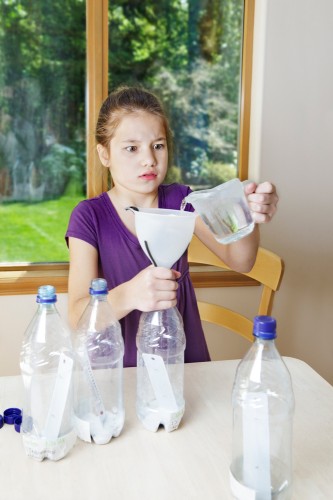“You are a moss. Describe your experiences.” – British Columbia Grade 11 biology question
Education is a notoriously faddish field, prone to continual quackery. One moment kindergarteners are being streamed by achievement level, and the next we’ve swung into play-based high school teaching methods. Science education is no exception.
In September 2014, Saskatchewan high school juniors will have three science options to choose from. None of them will be Physics, Chemistry or Biology; rather, they can opt for Health Science, Environmental Science or Physical Science. The emphasis is on “real-world” issues, which translate roughly into “human-centred problems”.
Drastic though it seems, the curriculum shift responds to a range of complaints, from the lack of interdisciplinary links in the high school curriculum to the demand for career-based instruction. It also reflects the province’s intention to bring indigenous knowledge systems into every subject at every grade level. Thus, health science will include various traditional medicines and environmental science includes ethics and activism.
“The curriculum looks great and actually probably much more practical lifelong learning for students. After all, how much basic Grade 11 chemistry do people retain if they don’t choose to go into a scientific field?” says Dr. Shauna Duigenan, a radiologist at the Ottawa Hospital. “I have for a long time felt that the current science curriculum does not translate well into real life.”
Duigenan offers as an example the Krebs cycle, familiar bane of the high school memorizer, versus the value of learning basic human physiology and anatomy. “One has ongoing impact on a person’s understanding of how their body functions and future implications for making informed medical and health choices, while the other just gets forgotten,” she says.
Astrophysicist Rob Thacker is of two minds: “The book I just co-authored has a bias against siloing, but at the same time we stress the importance of considering all facets of science. It would be terribly ironic if real world science was taken to be human centered, as the universe most obviously is not human centered.”
“If you were transformed into an ionic compound, which would you be? Explain your choice.” Nova Scotia Grade 11 chemistry question
I’m leery of what seems to me an incomplete range of content, but I realize it’s been a while since I’ve been in a public school science classroom. At first glance, the Canadian student’s experience seems similar to the one I had. Primary schools focus on local plants, animals, rocks, soil, and the water cycle.
In darkened rooms across the country, globes are walked around flashlights with tennis balls serving as moons. The demonstrations are explained in detail for elementary school teachers, who often have no university-level science under their belts.
By Grade 9 it’s pith balls and balloons and pieces of fur for electrostatic phenomena. Particle theory makes an appearance, as do tectonic plates, lenses, mirrors, heat and the Bernoulli principle. There’s cell theory, body systems, osmosis, diffusion and ecology.
Then we’re in the senior years and Science is no longer one class but three. Wave theory, quantum mechanics and diffraction are separated from genetics. Photosynthesis is explained in a different classroom from pH charts.
“Physics 416 students observe the behavior of alpha, beta and gamma rays using appropriate methods” – Quebec curriculum (translation: young teenagers are asked to work with Cobalt-60 and, incidentally, mercury).
“The teacher should not spend a great deal of time telling children about science. Instead, children should be provided with opportunities to find out on their own,” asserts the Newfoundland curriculum. This is in keeping with the child-centred approach espoused by Canadian educators for decades despite overwhelming evidence that direct instruction – well-organized textbooks written by knowledgeable people in the field, correction of errors, high expectations – produces much better outcomes than the dozen or so other dominant pedagogies.
Instead of following science’s logical sequential structure, students nowadays are expected to discover haphazardly. Working alone for a few hours, they must somehow derive principles that took centuries for scientists to decode.
When they aren’t noodling around with inexpensive materials, students are expressing their cursory understanding of the course themes. They join hands to represent chemical bonds or bob around to act out skits, taking on their challenging character roles as particles.
Of the various erroneous claims made by science curricula across the country, here are a few:
“Investigations into air pressure at various altitudes will help students gain an appreciation of how the pressure of a gas is dependent upon altitude as opposed to that of liquids.” – Nova Scotia Grade 8 science curriculum.
New Brunswick and Nova Scotia (Grade 10): Animal cells have both a cell membrane and an external cell wall.
Manitoba (Grade 10): The highly caustic calcium hydroxide is used as an antacid.
Quebec (Human Biology): Muscles increase in volume when they contract.
As for claims made in every day life — by peddlers of herbal remedies, acupuncture, sweat lodges, chiropractics, and the like – if a science class could impart one useful thing on its students, it would be to greet all such claims with “Why should anyone believe this?” a useful starting point for any evidence-based inquiry.
Instead, New Brunswick Grade 5 students are assigned these very topics to “find out where the technique was developed and how it works to prevent or cure illnesses.” There is no question about whether they are actually effective.


One thought on “Discovery-based Ignorance”
Comments are closed.